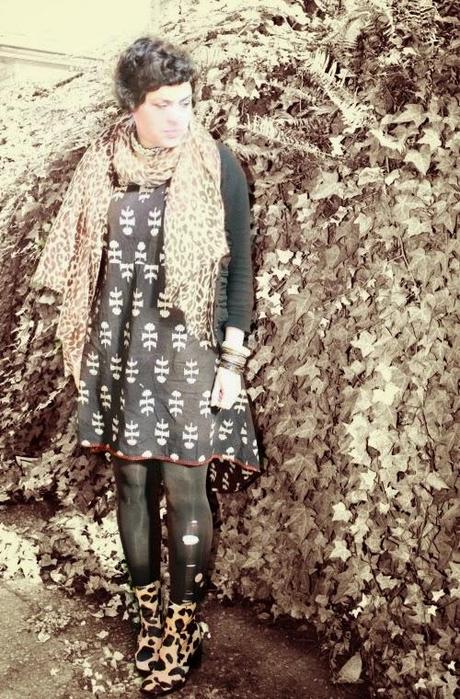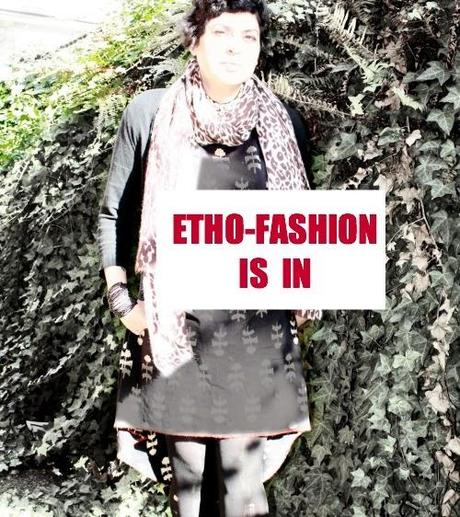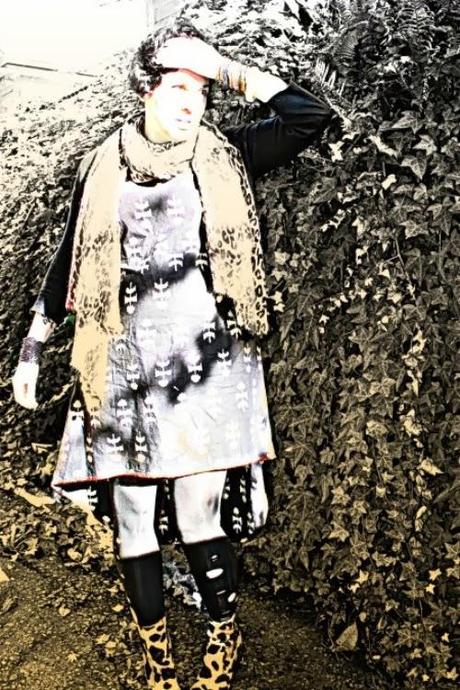

It's not always black and white: searching for fashion labels that fit both politics and personal style
Last year, and again recently, Marketplace: Handworks of India approached more than a handful of fashion bloggers, myself included, and invited us to participate in a social media blitz, including product reviews and giveaways. Many of these women, who aren't normally inclined to work with brands, quickly accepted the invite- and many bloggers I follow and respect, dressed up their given piece and talked about this not-for-profit "fashion" company. (You can view my post about them last year HERE.) And, why? Why did so many of my fashionable +40 blogger pals jump at the chance to model for this little known brand?Because Marketplace: Handworks of India is a "fashion" brand with a mission.
"MarketPlace: Handwork of India is an innovative fair trade, not-for-profit organization which combines the experience of running a business with a variety of support programs designed to effect real, meaningful, and lasting change in the lives of low-income women in India."
 Welcome to the long arm of "slow fashion." Marketplace of India, along with a growing number of similarly minded companies, are in it for the long haul- they don't just want to DRESS YOU, they want to ADDRESS economic and social issues that are prevalent in the world today. By offering their customers garments created by people paid a living wage, they're offering customers the ultimate in "feel good" fashion, clothes that are comfortable, well made, and emotionally satisfying, long after the shopper's high has left the building.
Welcome to the long arm of "slow fashion." Marketplace of India, along with a growing number of similarly minded companies, are in it for the long haul- they don't just want to DRESS YOU, they want to ADDRESS economic and social issues that are prevalent in the world today. By offering their customers garments created by people paid a living wage, they're offering customers the ultimate in "feel good" fashion, clothes that are comfortable, well made, and emotionally satisfying, long after the shopper's high has left the building. I'm going to be honest with you- the "style" of the Marketplace doesn't suit me. It's a bit too, uh, hippie-dippy, too patchouli-soaked-and-Whole-Foods-shopped for my taste. Took me HOURS to find the first piece that I chose to model, and nearly a year, to finally choose the next piece: something I thought I would actually wear in real life: a sturdy, batik print cotton mullet dress, with a trendy "high-low" hem. It's an incredible piece really. Well made, with great details like ruche-ing along the shoulders, and a thick rust-red, cotton thread embroidery bordering the hem and neckline.
I wore the dress exactly TWICE. Lovely thing, and with its roomy cut, empire waist, this dress with the high-low hem, is VERY comfy. But in all honestly, I doubt I'll wear it again- the style doesn't feel "me." But what does feel like me is the ethos and quality behind the brand. And I'd rather dress in something that suits my politics and supports the well-being of the people who made the garment, than wear an on-trend hipster frippery hastily produced in a sweatshop.
Etho-fashion is IN. If you are still insistent on buying the rubbish from one of those fast fashion stores, let me put YOU on notice. They wouldn't be exploiting people for profits, if there wasn't somebody willing to buy their goods, or more accurately, "un-goods." If we, as a customer base, took a stand and said: I'll be making informed purchase decisions, and shop from ethical companies- well, those fat cat corporates, glutted on cash, deficient on decency, just might wake up and smell the FAIR TRADE coffee.
Whatever you say, when you say it with your dollars, their listening skills goes up a notch. When they see bottom lines bottom out, they just might be willing change those devastating business models. When customers choose ETHOS over the immediate junkie fix of a trendy $10 tee, more companies will be prone to choose ETHOS as well, for the sake of their own economy.

ETHO-fashion is the FUTURE, my friends, and I mean that quite literally. If we are to survive as a species, we must be more sustainable in our day-to-day living. If we are to THRIVE as a culture, with a little cultural alchemy, we can shift corporate greed and consumer gluttony into a viably, sustainable pipeline of people to people- from well fed, well treated producers to educated and happy end-users. There might be some awkward transitions (such as wearing a mullet dress that doesn't suit one's personal, sartorial taste) but shopping ethically is the inevitable outcome, if we are to truly "dress for success" in our 21st century.
Now Wearing:
- leopard cashmere scarf, c/o L'affaire Cashmere
- cotton batik print mullet dress, c/o Marketplace: Handwork of India
- black "holey" tights, DIY
- "giraffe" pony hair boots, thrifted

